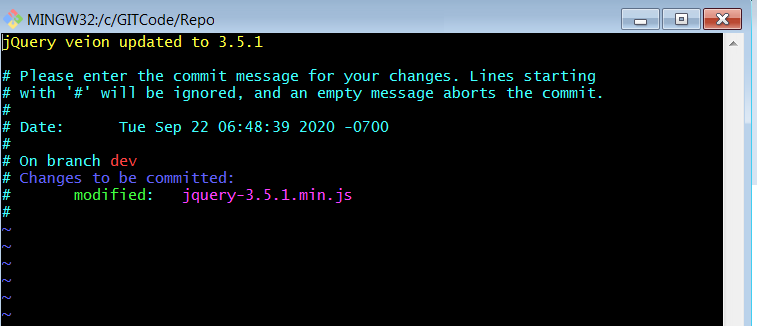

We’re really interested in what you think of this more informal format – it’s more like a video podcast than a screencast. I read the git article: note that if your working directory or staging area has uncommitted changes that conflict with the branch you’re checking out, Git won’t let you switch branches.It’s best to have a clean working state when you switch branches. We’re also two advocates using two different IDEs, coding in two different languages – many challenges we face as developers aren’t unique to our language or tool. This is a configuration file that stores the mapping between the project’s URL and the local subdirectory you’ve pulled it into: submodule 'DbConnector' path DbConnector url If you have multiple submodules, you’ll have multiple entries in this file.
#Git switch branch without committing code
The first video features me, Trisha Gee (Developer Advocate for IntelliJ IDEA) and Gary Hockin (Developer Advocate for PhpStorm) answering the question “How do I switch branches without losing the code I was working on?”. Through frequent battles with Git I have learnt there’s always more than one way to do things, so in this video we present two different options. Solution 1 - Git You need a clean state to change branches. So we’ve decided to start answering these real world questions with videos showing what to do.

The stash works as a stack of changes that are saved 'somewhere outside the branches spaces', hence can be used to move modifications between branches.

Moreover, this command will leave the current branch as it is and bring all uncommitted changes to the new branch. No you cannot, however what you are doing by hard copying files is implemented by git stash using commits. You can now continue working with your previous changes. So never change anything in the C branch, just use it to integrate changes. If you need to make more changes do it in the appropriate branch, not C, then merge to C. If there are multiple stashes on a single branch, simply add the name of the stash to the end of the command. Commit changes on the feature branch, B, then merge them to the C branch, which now contains the build improvements and the feature branch changes, so you can test them together.
The git checkout -b#Git switch branch without committing how to
We regularly get questions about how to achieve a particular thing – as developers there are parts of our workflow which trip us up, that our tools can help us with if we understand how. Next, let's see how to move the changes to a new branch and keep master unchanged. a) Switching branches without committing local changes apply the stash when you are ready to go back to the branch.


 0 kommentar(er)
0 kommentar(er)
